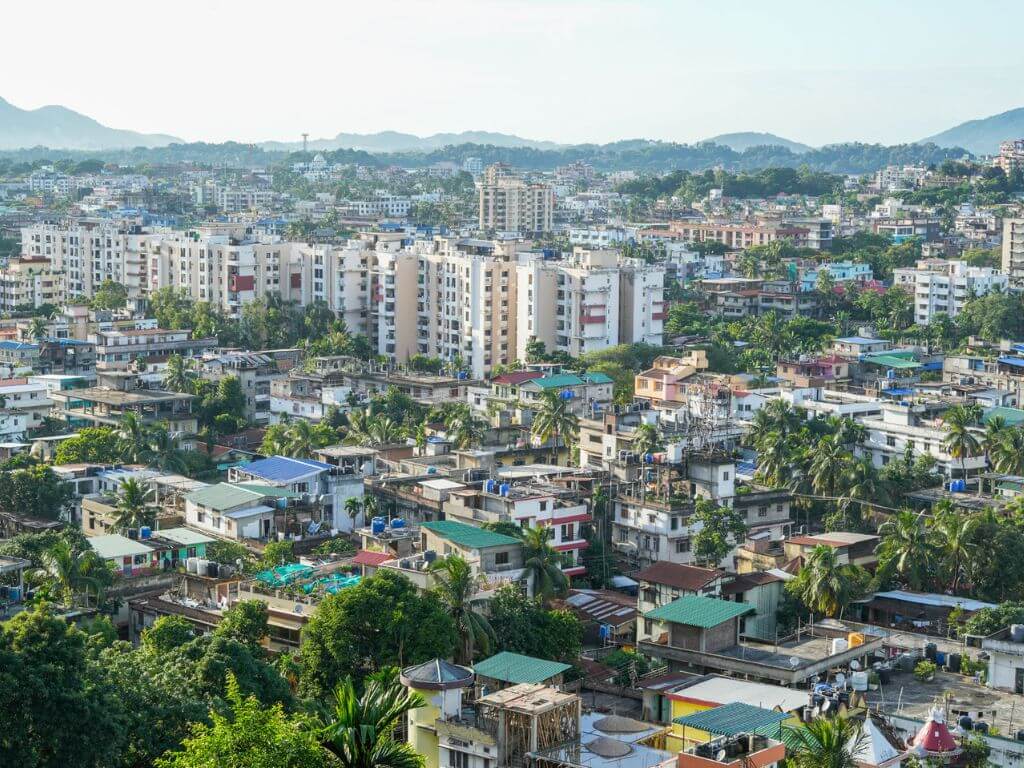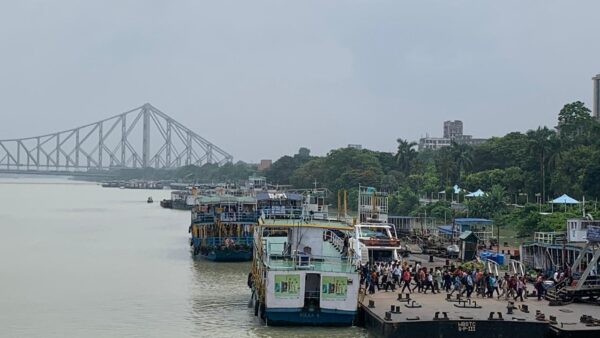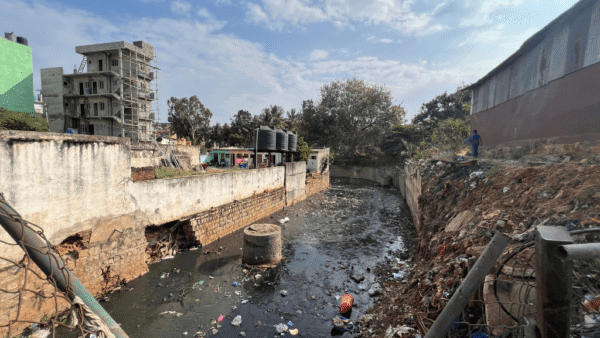Angshuman Kashyap lives in a three-storied residential building in Guwahati. The west-facing rooms of his apartment receive direct sunlight in the afternoon. “These rooms get much hotter compared to others and turn into furnaces when temperatures soar,” says Kashyap. The walls are brick and concrete, as is the norm. As evening descends, the heat can be felt radiating out of the westerly walls making even the air-conditioner, let alone ceiling fans, redundant. “This was built around 2004. We did not feel the need for an AC for many years but gradually installed. Now, even these are insufficient,” he says, adding that the glass facades of the building staircase heat the common space too.
Kashyap echoes what many lament about Guwahati’s high temperatures, unbearable heat, and rising power bills. The old Assam-type houses were more comfortable, they say. “They had high ceilings with ventilation, timber-framed walls plastered with a thin layer of cement, tin roofs, and concrete floors. The house kept cool. I regret demolishing my old house now,” laments Sujit Baruah. This is commonly heard in Guwahati.
It assumes serious connotations when seen with rising temperatures as Climate Change deepens its hold. Guwahati, the largest city in northeast India, experienced an unprecedented temperature rise lately. On June 7, the maximum temperature was 38.9 degrees Celsius – four-five degrees above normal and the second highest temperature ever recorded for June. On September 4, the city showed 38.2 degrees Celsius, the highest recorded for September in 72 years. Data from the India Meteorological Department (IMD) showed four other cities in Assam – Mohanbari in Dibrugarh, Tezpur, Jorhat, Silchar – experiencing a record rise in temperatures this day with Silchar registering its highest ever at 39.4 degrees Celsius.
As Climate Change-driven extreme weather shows up more, it has increased the demand for power in new buildings, which ironically, has led to a greater demand of electricity and higher emissions from fuel-burning. The global average is that cities are responsible for 70 percent of emissions,[1] and the construction industry is responsible for 37 percent[2] of global emissions each year. However, 75 percent of them emanate from the electricity produced from fossil fuels that is used daily in homes while the balance comes from manufacturing of construction materials. Cement and steel are among the largest carbon footprint among materials, globally.[3] Guwahati, with frenetic construction everywhere, is no exception.

Photo: Surajit Sharma
Need for net-zero buildings
Guwahati’s readiness to reduce its emission footprint would have to cover its electricity grid, energy efficiency of its buildings, and the choice of materials used in its buildings. Its buildings and climate are inter-connected in more ways than acknowledged.
The city’s Master Plan covering 328 square kilometres has 2,65,800 housing units for a population of nearly 11.4 lakh enumerated in the Census 2011, according to the Guwahati Metropolitan Development Authority (GMDA). It estimates that, by 2045, the population will rise to over 38.5 lakh, creating a demand for at least 6,80,000 houses. The challenge is not only to build these houses but to build them green and climate-resilient.
“Guwahati and other cities in Assam are urbanising at a tremendous pace. We must prioritise to establish an ecosystem that pivots our building stock to a net-zero carbon future, by encouraging building energy efficiency and low-carbon-intensive construction materials,” says Ragini Goswami, architect and specialist in green buildings. “If we miss regulating the current stock of buildings, we will most likely be locked into maintaining buildings that will be energy intensive and high carbon emitting.”
A net-zero carbon building is designed to have a minimum emission footprint – both by minimising its electricity consumption and using materials that come from low-emission manufacturing processes. The design strategies involved are similar to the globally-recognised green buildings which minimise electricity consumption and factor in sustainability aspects such as soil, water, and waste. The way to decarbonise Guwahati’s buildings lies in reviewing and re-writing its building bye-laws.

Photo: Barasha Das
Interventions to decarbonise buildings
This becomes important as temperatures soar and the peak hour demand for electricity gallops. It touched 2,500 MW this year which was a substantial increase from 1,970 MW in 2022-23. This demand is projected to be 4000MW by 2026.[4] Only 25 percent of Assam’s electricity demand comes from Renewable Energy (RE) while 75 percent of the grid is from fossil fuel sources; the figures for Guwahati are not available. Additionally, the extra daily electricity, purchased from the India Energy Exchange, is primarily from fossil fuel-based sources. Unfortunately, under the centre’s Rooftop Solar Scheme, the privately installed solar capacity in Assam is just 45 MW, approximately 70 percent of it in Guwahati.
Regulating buildings and construction to reduce Greenhouse Gas (GHG) emissions has been around since the early 1990s with the advent of Green Building Rating Systems (GBRS) and India actively adopted it in the early 2000s. International and indigenous organisations support the transition to green buildings and the GBRS offers strategies for decarbonising. “It has dedicated criteria for low-energy intensive construction materials and local materials. It makes a strong case for their use within the building design frameworks,” explains Shabnam Bassi, deputy CEO of GRIHA Council, an organisation that promotes green buildings.
However, Guwahati (in fact, Assam itself) is out of sync with the green building movement. In these decades, only eight certificates have been issued to Assam while 503 were issued in Maharashtra, 238 in Tamil Nadu, 185 in Uttar Pradesh and 181 in Gujarat. Assam is lagging behind 20 states and Union Territories on GRIHA’s Green Building certification. Just as crucial to decarbonising buildings is the inclusion of the Energy Conservation Building Code (ECBC) of 2007 or the ECBC-Residential (R) and Eco Niwas Samhita of 2018, which Guwahati must introduce into its building bye-laws.
This framework – of GBRS and ECBC in the bye-laws – could achieve energy efficiency in buildings in line with the recommendations of the Bureau of Energy Efficiency (BEE)[5] under the Energy Conservation Act of 2001. States are required to have frameworks to suit regional conditions and enforce them through the building bye-laws. The BEE’s State Energy Efficiency Index 2021-22 shows that 30 out of the 37 Indian states and UTs are ahead of Assam. A dozen states have already adopted the ECBC in the building bye-laws of one or more of their cities while this integration is underway in 18 states. Assam cannot afford to be laggard.

Photo: Surajit Sharma
Lacunae in existing bye-laws
In Guwahati, citizens show ignorance about green building frameworks and the ECBC. Both Kashyap and Baruah said their architects had not mentioned such things. Along with revising the building bye-laws, Guwahati administration would also have to run awareness campaigns.
Chinmoy Phukan, architect and former Indian representative to Architects Regional Council Asia’s Young Architects’ Council, says that “The general public needs to be made aware of energy-saving practices and their benefits on both the environment and their wallets. Only then will green buildings flourish.” Adds Saurav Pansari, managing director and CEO of Royal Aawas and co-chair of Indian Green Building Council (IGBC) Northeast Chapter, whose Royal Aawas Tezpur was rated platinum, “Most developers do not get the right consultant for guidance and certification though they have been adopting certain measures like heat reflective paint, plantation of trees, use of UV reflective glasses, terrace gardening, cross ventilation, so on.”
The green building ecosystem calls for many stakeholders – government, architects, financial institutions, and people. “There is a lack of consultants and professionals in the northeast region and a dearth of awareness among people on the subject,” adds Pansari.
The city has had the Guwahati Building Construction (Regulation) Bye-laws 2014 which were amended in 2020. Last October, the state government notified the Assam Unified Building Construction (Regulation) Bye-laws 2022 which apply to Guwahati. Both the bye-laws lay down the following: minimum 20 percent solar energy in the building’s connected load, optimising building design to reduce the demand for conventional energy, and use of less energy-intensive materials or regionally available materials. In fact, they also have appendices to green building certification and provide property tax rebate for buildings which qualify for Green Star ratings. Yet, the movement towards certified green buildings has been slow.
The shortfall in the bye-laws is that they offer no clarity on the processes between real estate developers and the state authorities, and do not clearly mention the rebate in property tax. “The government should encourage builders to acquire the certification with other incentives because property tax rebates have not generated interest, especially in the residential sector,” says Pansari, “Expecting developers to deliver green buildings with no real support from the government, in a home-buyers’ market which lacks demand for such buildings, is not the best strategy.”
However, the major lacuna is that five to six years after the ECBC codes were introduced, they are yet to reflect in the building bye-laws. The state missed this crucial integration even during the amendments in 2020 and in the Assam Unified Building Construction (Regulation) Bye-laws of 2022. This is despite the presence of the Assam State Designated Agency (ASDA) since 2002 to coordinate, regulate, and enforce provisions of the Energy Conservation Act, 2001.
Angana Das, former project officer of the ECBC Cell for Assam, explains, “The Inspectorate of Electricity, under the power department has the additional responsibilities of the ASDA. During my time, I saw how occupied they would be with the Inspectorate’s work alone. The additional responsibilities add a significant workload, also frequent transfers lead to repetitive briefing and acquainting the new officials with the work. It was natural for the workflow to slow down.”

Photo: Surajit Sharma
The way ahead
Since the incentive of property tax rebate has not yielded results, the building bye-laws could explore others such as Premium Green Building FAR (Floor Area Ratio) which has shown results in states like Maharashtra, Uttar Pradesh, West Bengal, and Tamil Nadu[6] where developers are incentivised with extra floor space to ensure a certified green building.
While the extra floor space may add to the increased pressure on the state’s energy and material demand, it can be managed by providing differential FAR incentives based on the building’s certification level. For example, a 5-star green building can be provided with a higher percentage of FAR incentive compared to a 3-star one. This would ensure that the improvement in energy and material efficiency of the building stock is always greater than the rise in energy demand due to the FAR increase. The state treasury can benefit too in the form of extra fees for the premium FAR.
Further, the state can go beyond the minimum provisions set out in the Energy Conservation Act, 2001, and dedicate a stand-alone team in collaboration with the BEE which will understand the state’s contextual protocols and deliver on the energy conservation codes. Incorporating the ECBC and ECBC-R into the building bye-laws would mean a mandate to all to follow them. This is why revising building bye-laws is crucial.
Hrishiraj Sharma, assistant director, Town and Country Planning in Assam says, “Encouraging green building practices is of utmost importance as Assam sees the adverse effects of Climate Change such as increased temperatures and erratic rainfall. The techniques can significantly contribute to mitigating these impacts and enhancing resilience. Secondly, the state’s abundant natural resources, including bamboo and locally sourced materials, could be used which align perfectly with the green building principles. These not only minimise the environmental footprint but also support local economies and traditional craftsmanship.”
Adopting the green building approach could also lead to substantial long-term cost savings for residents and businesses through reduced energy and water consumption too. This, in fact, can attract investment and tourism thereby bolstering the local economy. “By fostering awareness and adoption of these norms, Assam can set an example for other regions facing similar environmental challenges, promoting a more sustainable and eco-friendly future,” he explains. Officials say that the application of the ECBC is in progress[7], though in an ad-hoc manner.
The green building rating agencies do not have permanently stationed teams in Assam; they withdrew when there was no demand for the certification. With growing urbanisation, the time is apt for the agencies to return to the state and support the building sector’s transition to energy efficiency.

Photo: APDCL
Net-zero carbon building future
At this juncture, it is only fitting that every institution, whether private or government and every individual, accepts that they are contributing factors to Climate Change and play their part to mitigate it. Decarbonisation of buildings has a large role to play in this, for which re-thinking how the ECBC, green building and net-zero design frameworks are integrated into the building bye-laws is important. This could mean a sustainable or turbulent future.
“It is frustrating to see that green building protocols are still neglected across the region. Besides ensuring efficient use of resources including energy, water, and waste, they are designed to improve the quality of life by improving indoor and outdoor air. The implementation of even the existing guidelines could significantly bring down carbon emissions, this should be prioritised,” says Rituraj Phukan, international climate activist from Assam.
Lubaina Rangwala, associate director of the World Research Institute who worked closely with Brihanmumbai Municipal Corporation to develop the Mumbai Climate Action Plan, adds, “The success of a climate action plan hinges on genuine collaboration between all state government departments with a common goal to cut back on GHG emissions while proactively safeguarding the future of the city communities, especially those most vulnerable to Climate Change. The ‘interdepartmental collaboration’ makes all the difference.” The Mumbai Climate Action Plan is a 30-year roadmap and systematic framework for climate resilience[8] with mitigation and adaptation strategies through low-carbon, resilient, and inclusive development pathways.
Guwahati, and for that matter Assam, must adopt the green buildings framework in sustainable ways to eventually become a net-zero carbon city and state.
Barasha Das is an independent journalist based out of Guwahati, Assam. She reports on environment and Climate Change — causes, adverse impacts, and policies to combat climate disasters. She has extensively covered every aspect of reporting on ‘city’. She is also associated as a Research Writer with OnePointFive Tribe, a platform working for a Net-Zero Carbon Future.
Harish Borah is a subject expert in cost/carbon studies within the building industry. He is the Principal ‘Carbon’ Expert for ADW Developments (UK); member of GRIHA’s ‘Technical Advisor Committee’, and Founder of OnePointFive Tribe. His works portfolio is spread across the UK/EU, the Middle East, and India. He has also been named among India’s top 25 leading minds in sustainability by the Economic Times.
This is the first part of a series supported by the QoC-CANSA Fellowship to report on Climate Change and cities in four nations of South Asia.
Cover photo: View of Guwahati city by Surajit Sharma




